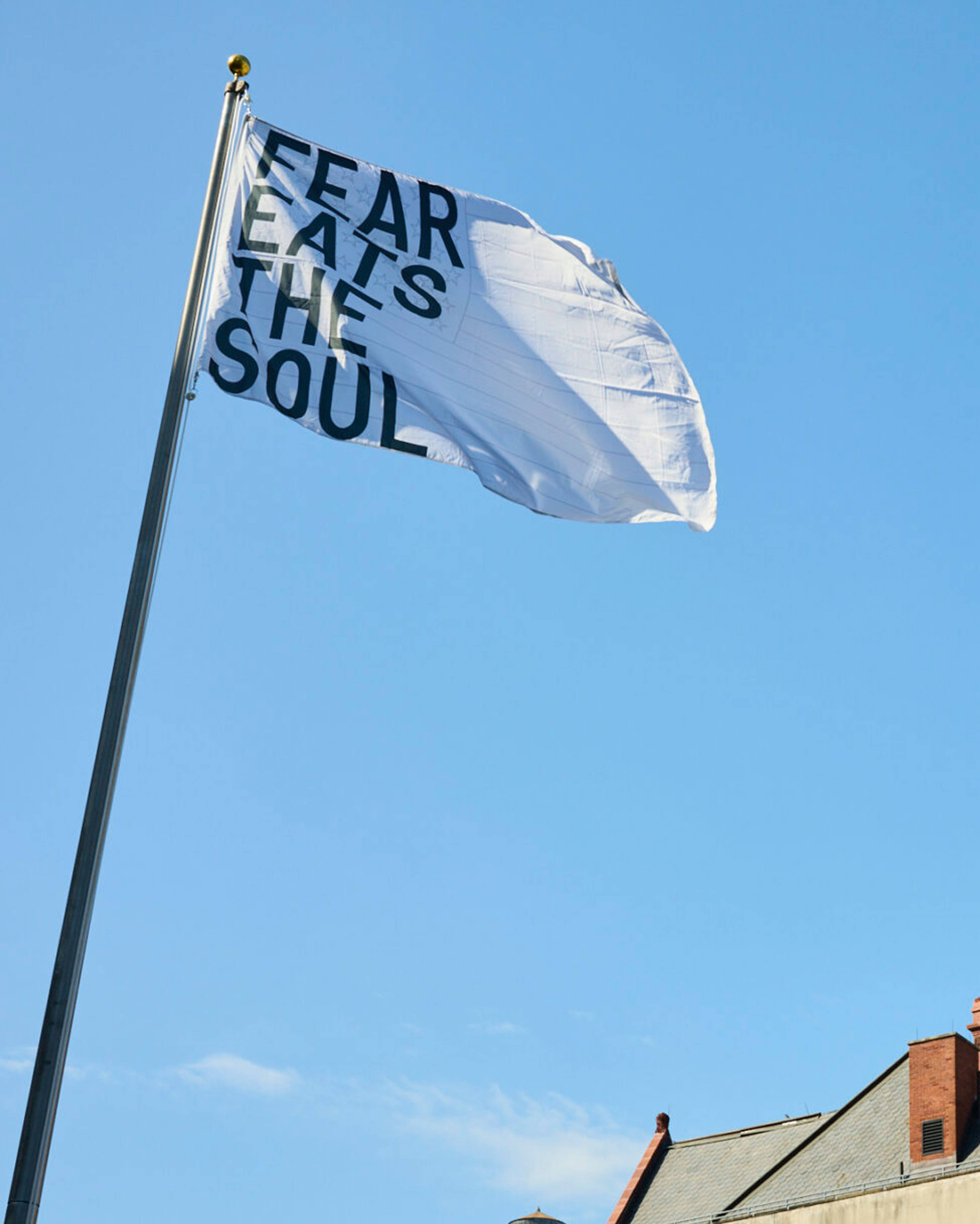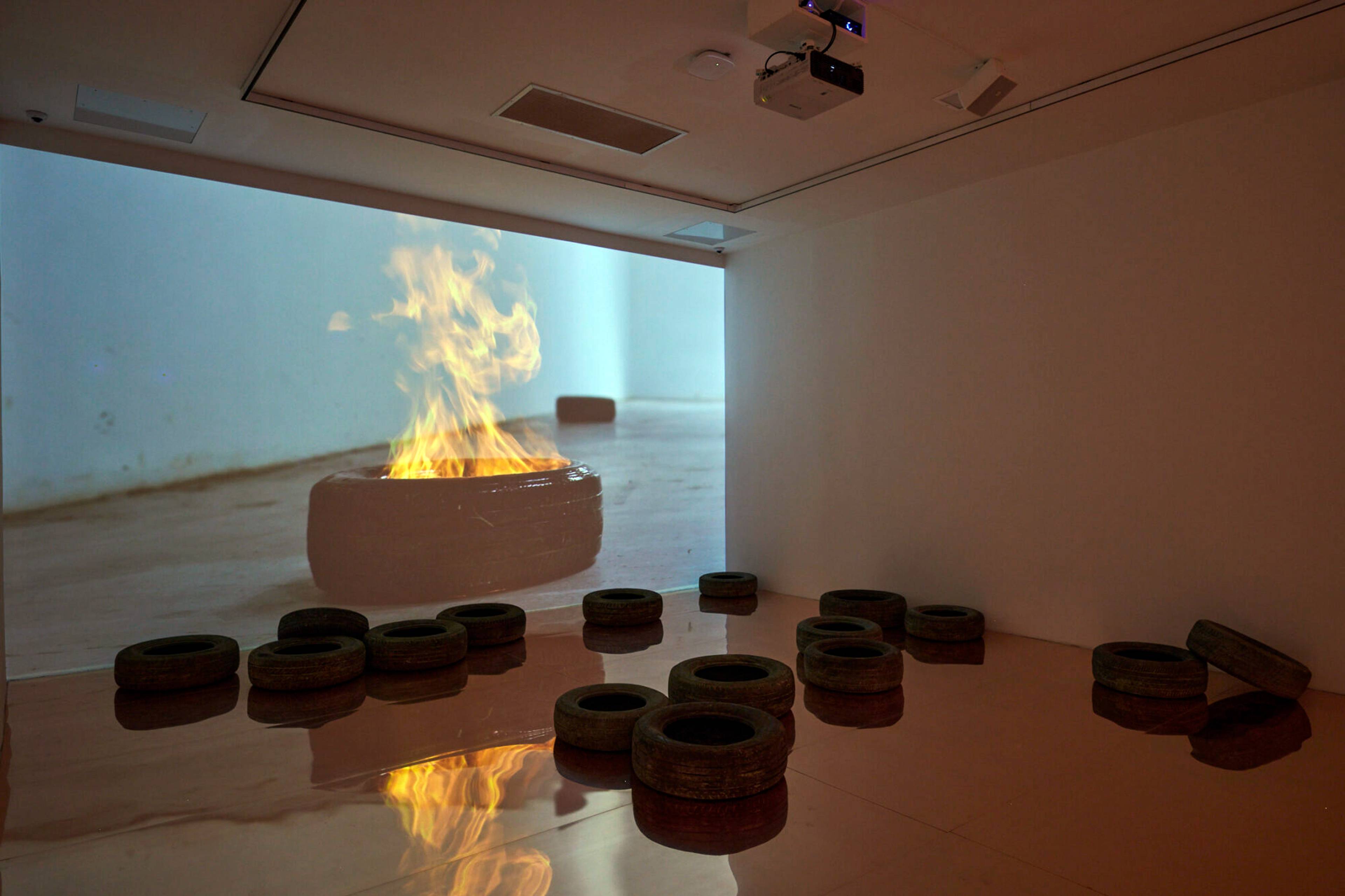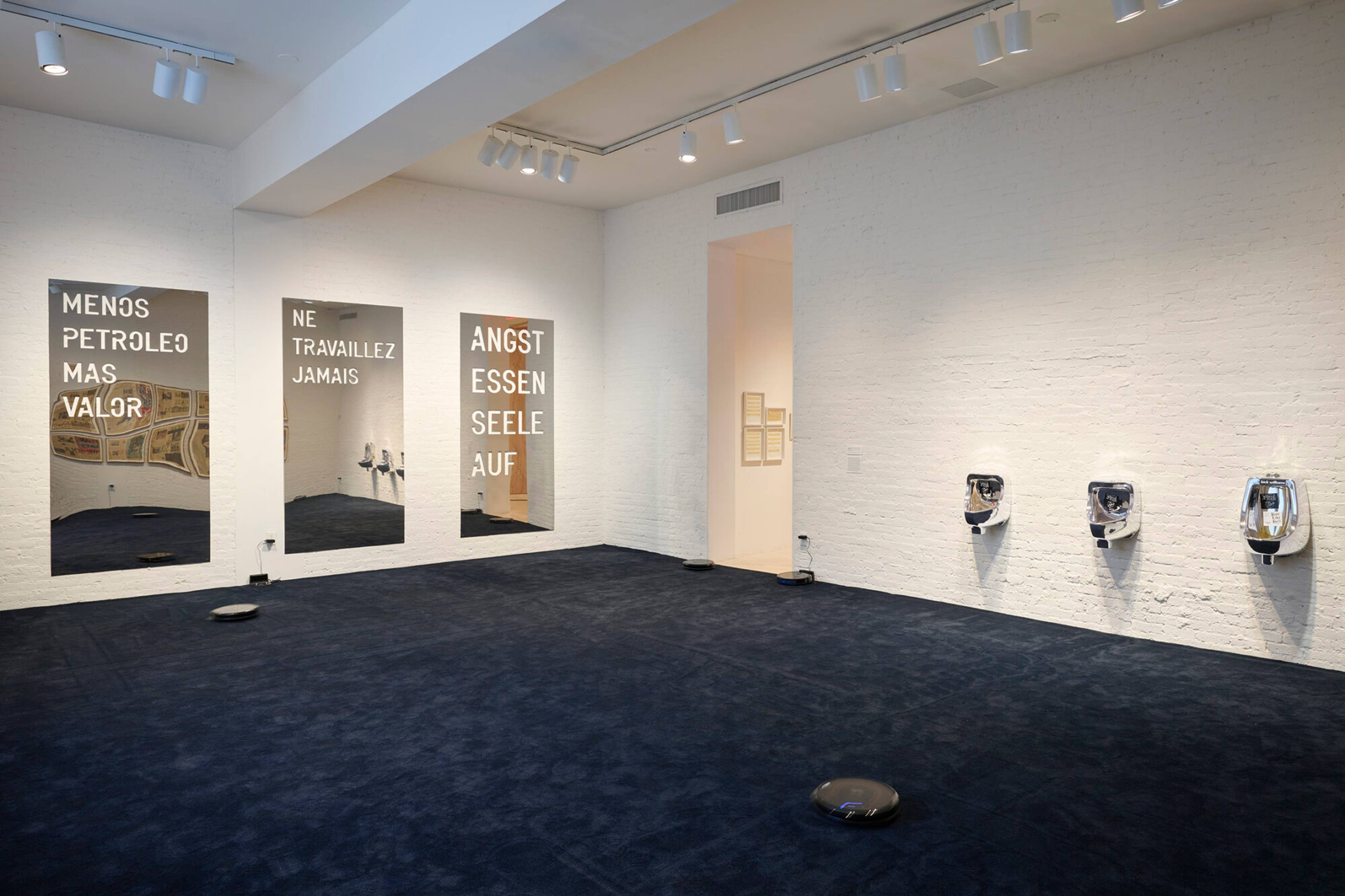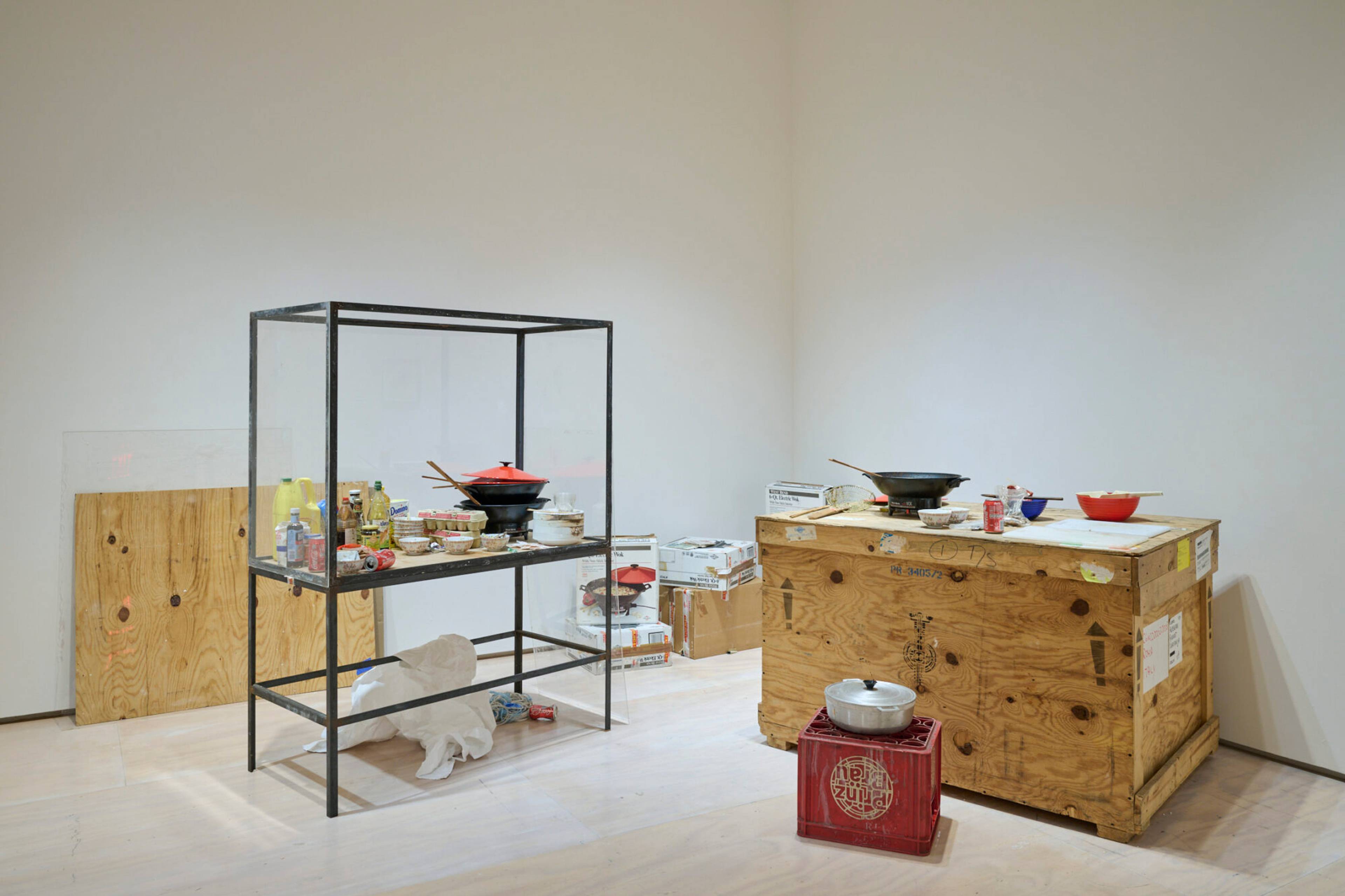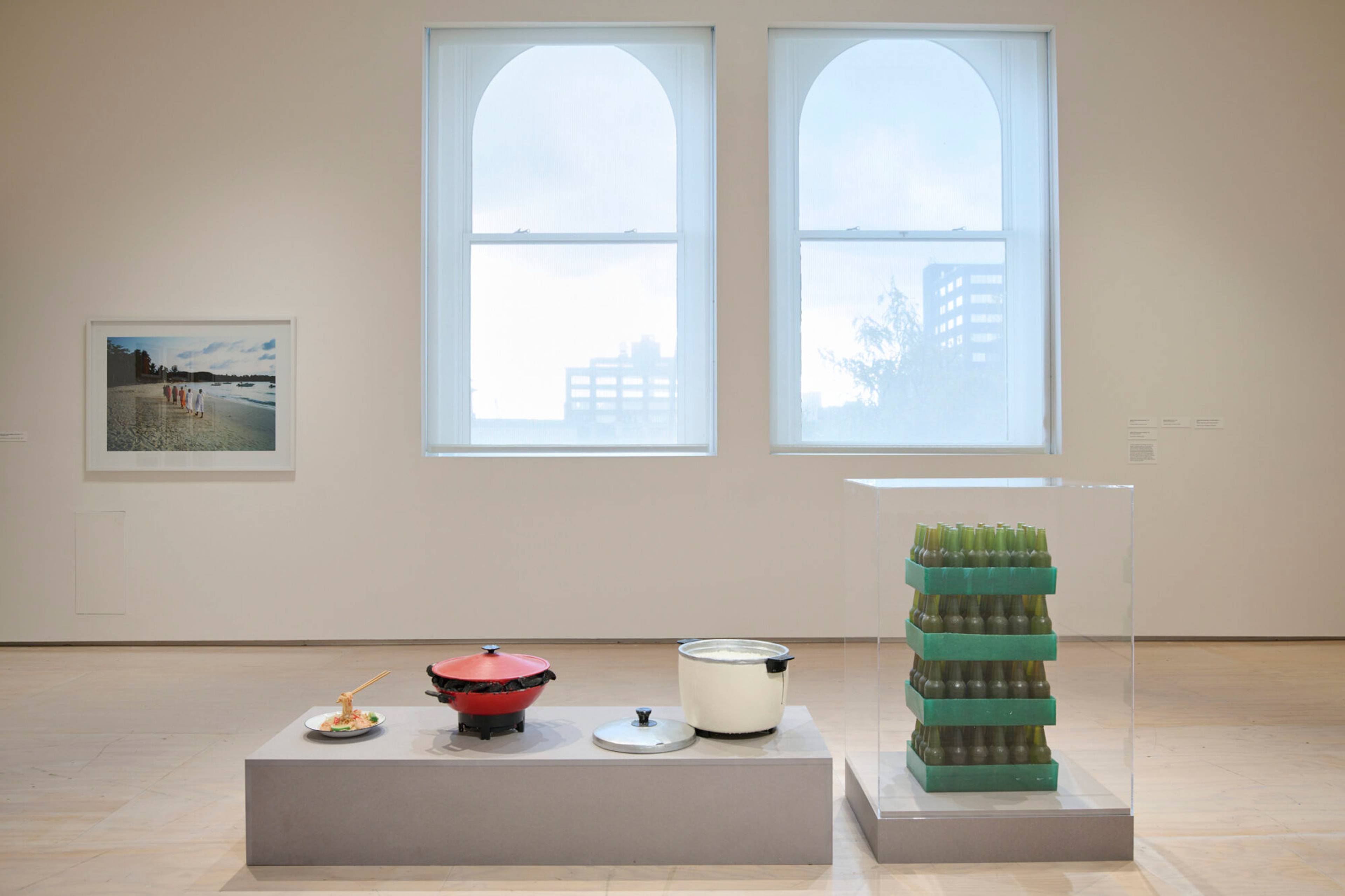I was born in neither the right place nor the right time to eat pad thai in a New York gallery. “A LOT OF PEOPLE,” Rirkrit Tiravanija’s first major institutional retrospective, reminds me that this only makes things more interesting. Bringing together four decades of work, from his early “spirit house” sculptures to his more recent text-based works, the exhibition complicates any simple rendering of Tiravanija as a “relational” artist, maintaining a critical tension between ambivalence and anachronism.
Prefaced by a white flag reading “FEAR EATS THE SOUL” in the courtyard, the majority of the exhibition takes shape within a sequence of galleries that present significant evolutions in Tiravanija’s career. The exhibition then splits off into several separate rooms, each dedicated to one of his filmic or durational projects, before culminating in a large, open space where five alternating “situations,” including Tiravanija’s paradoxically “iconic” cooking pieces, are presented across the duration of the show.
Rirkrit Tiravanija, untitled 2015 (bangkok boogie woogie, no. 2), 2015–16
View of “A LOT OF PEOPLE,” MoMA PS1, New York, 2023
The curatorial logic is neither chronological nor exhaustive, but intensive: Viewing the exhibition feels like remixing time. I went from the feature length film Karl’s Perfect Day (2017) to a remake of a 1994 Tiravanija Warhol exhibition at Gavin Brown’s Enterprise, New York, to a room of poetically failed monuments to mythical downtown pad thai. Whether from examining dirty bowls displayed behind plexiglas or watching footage of people chatting at Tiravanija’s opening at neugerriemschneider, Berlin, in 1998, what animates the selection of works is the playful tension implicit in the artist’s displacement of cultural memory, his works often shifting form, from utility to symbol and back again. The most eloquent example of this are Rolling Rock beer bottles that appear throughout the exhibition, first as readymades (untitled 1991 (bottles from the opening of untitled 1990 (blind)), 1991), then cast in resin (untitled 1996 (4 trays & 96 bottles), 1996), later becoming a monolithic chrome column (untitled 2013 (endless rolling rock), 2013).
This emphasis on Tiravanija’s ambiguous relationship to the “object” – fluctuating between artifact and commodity, trash and fetish – is fascinating. Tiravanija, who once threatened in a text-based student work to “blow up” a museum in Chicago if it didn’t return the Thai artifacts in its collection, has seemingly always sought to disrupt – albeit by less extreme means – Western culture’s morbid relationship with objects. This is particularly evident in the artist’s choice to use the first brand of “oriental” woks ever mass-marketed to white, middle-class America in his cooking pieces, objects which he went on to replicate in plaster and resin (untitled 1995 (for m.b.), 1995). Their patently “Pop” presence in the show seems like a dark joke on “eating the Other,” a sense of humor echoed in the excellent untitled 1992 (red, green, yellow curry) (1992), a photo of Tiravanija’s family collaged onto cans of Thai curry paste, his personal archive turned into cultural export. Displayed alongside the detritus of his better-known participatory pieces and works that continually reference Warhol, it becomes clear that, from the beginning of his career, Tiravanija not only consciously produced and reproduced commodities, but also documented the process of his “becoming commodity,” his difference “eaten” by a post-1989, globalized art world and its various markets.
Rirkrit Tiravanija, untitled 2011 (558 broome st, the future is chrome), 2011
Rirkrit Tiravanija, untitled 1990 (pad thai), 1990
Yet, Tiravanija never really makes a point of this, rather maintaining ambivalent relationships to identity and commodification. One could even say the “visual identity” of his more recent text-based works reinforce this dynamic, his chosen slogans available in many languages and on many different “products” (a flag, a t-shirt, or a mirror-polished stainless steel panel). Where this could seem cynical, or, worse, the uninteresting underside of his better-known “utopian” projects, “A LOT OF PEOPLE,” like Tiravanija, refuses to make a simplistic separation between “art” and “use,” instead allowing a contradictory poetics of displacement to emerge.
This displacement is as formal as it is conceptual: If there is anything actually “utopic” about Tiravanija’s work, it is the implication that nothing in this retrospective is really “art”; for art, like utopia, only (n)ever happens elsewhere, and certainly outside of the institutions that seek to frame it. In this way, “A LOT OF PEOPLE” is joyously melancholic: Each “object” leads somewhere else, the viewer left to imagine all the people who aren’t there, who can’t be there. In untitled 2007 (demonstration drawings) (2007), this absence becomes poignant: Tiravanija commissioning unnamed Thai artists, often his former students, to reproduce images of protests collected from The International Herald Tribune. Displayed en masse, the facevalue kitschiness of the pencil drawings subsides to a sense of emancipatory absence: Contextualized as a redistribution of resources to other artists, these drawings are mere stand-ins for an undercommons of art, of life that definitionally defies representation.
In the current context, where the very “materials” that Tiravanija became known for using – social relations – have themselves become engines of commodification (one need only think of social networks), this “elsewhere” that Tiravanija continually summons seems as vital as ever for thinking about the political “utility” of art – out of time, but not necessarily out of reach.
View of “A LOT OF PEOPLE,” MoMA PS1, New York, 2023
___
“A LOT OF PEOPLE”
MoMA PS1
12 Oct 23 – 4 Mar 24


